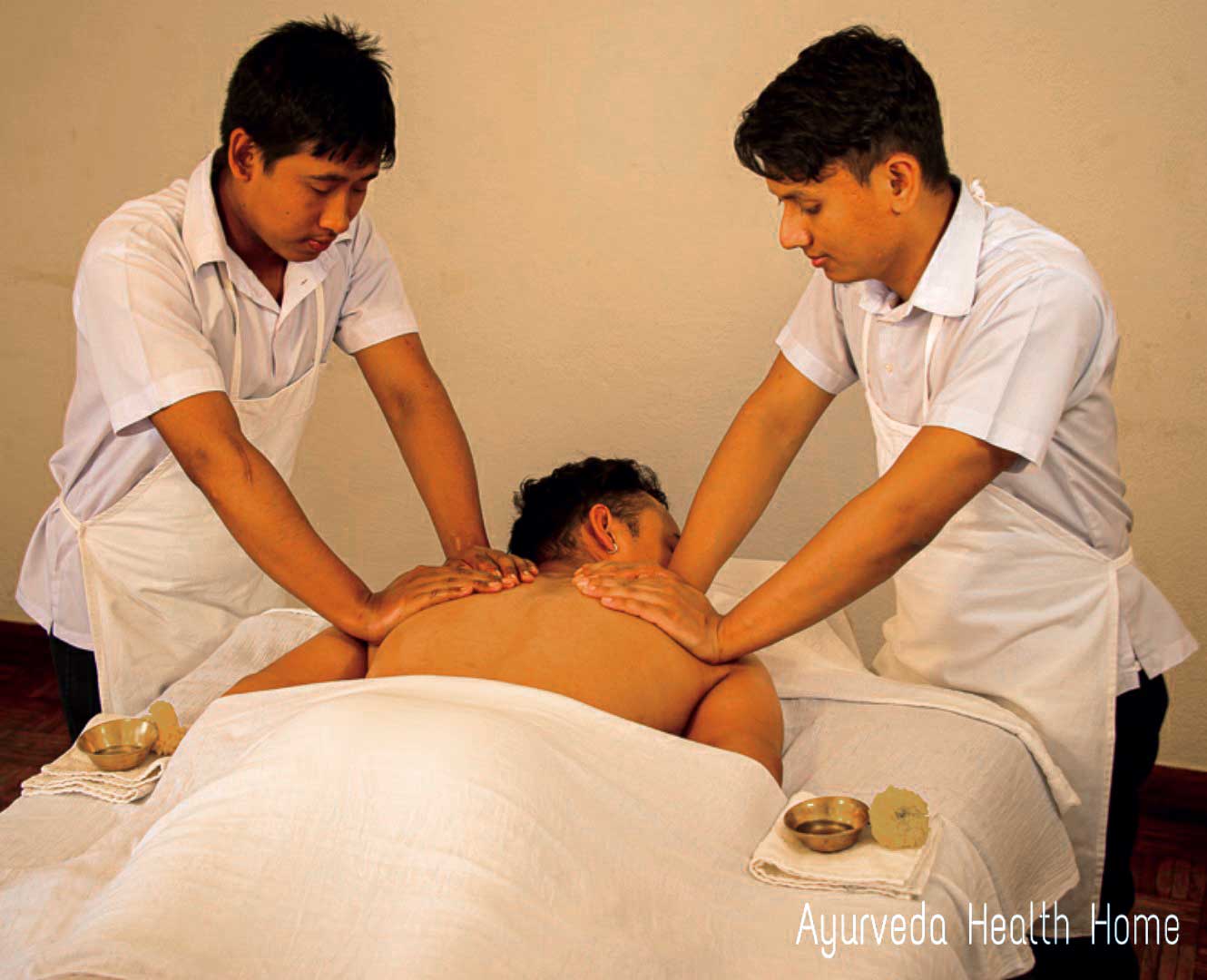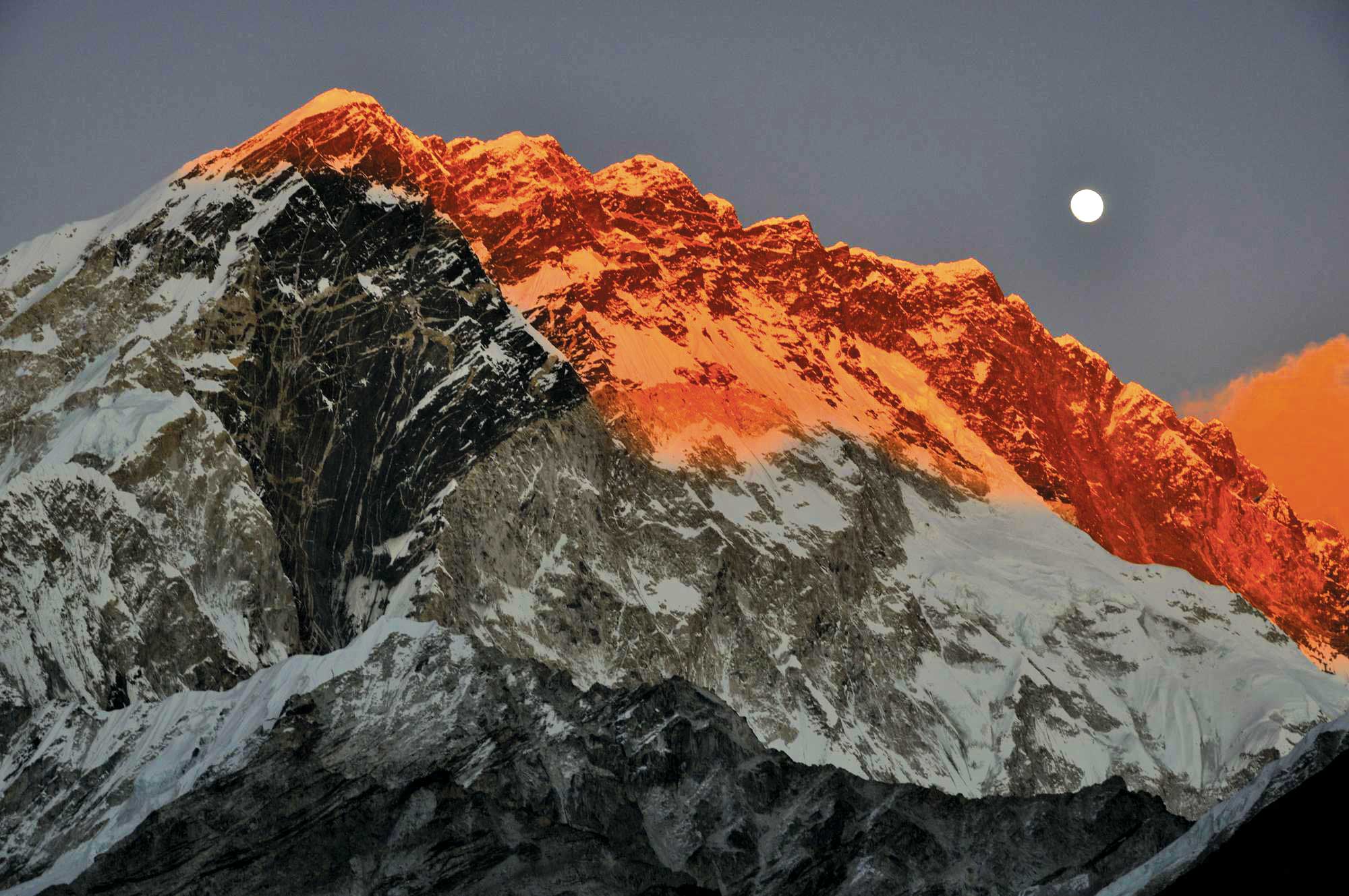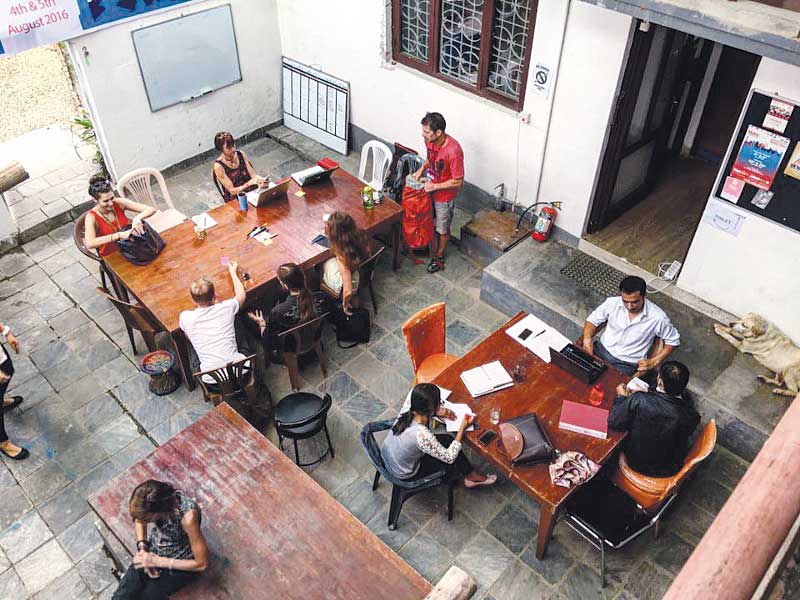.jpg)
Purnima was running out of food, water, and oxygen. Out of the four cylinders she had carried, only two remained. On top of that, she had menstrual cramps, too. She could hardly see anything due to blurred vision. Initially, she thought her glasses were covered with snow, but later, she realized that she had snow blindness, a painful and temporary loss of vision due to overexposure to the sun's UV rays.
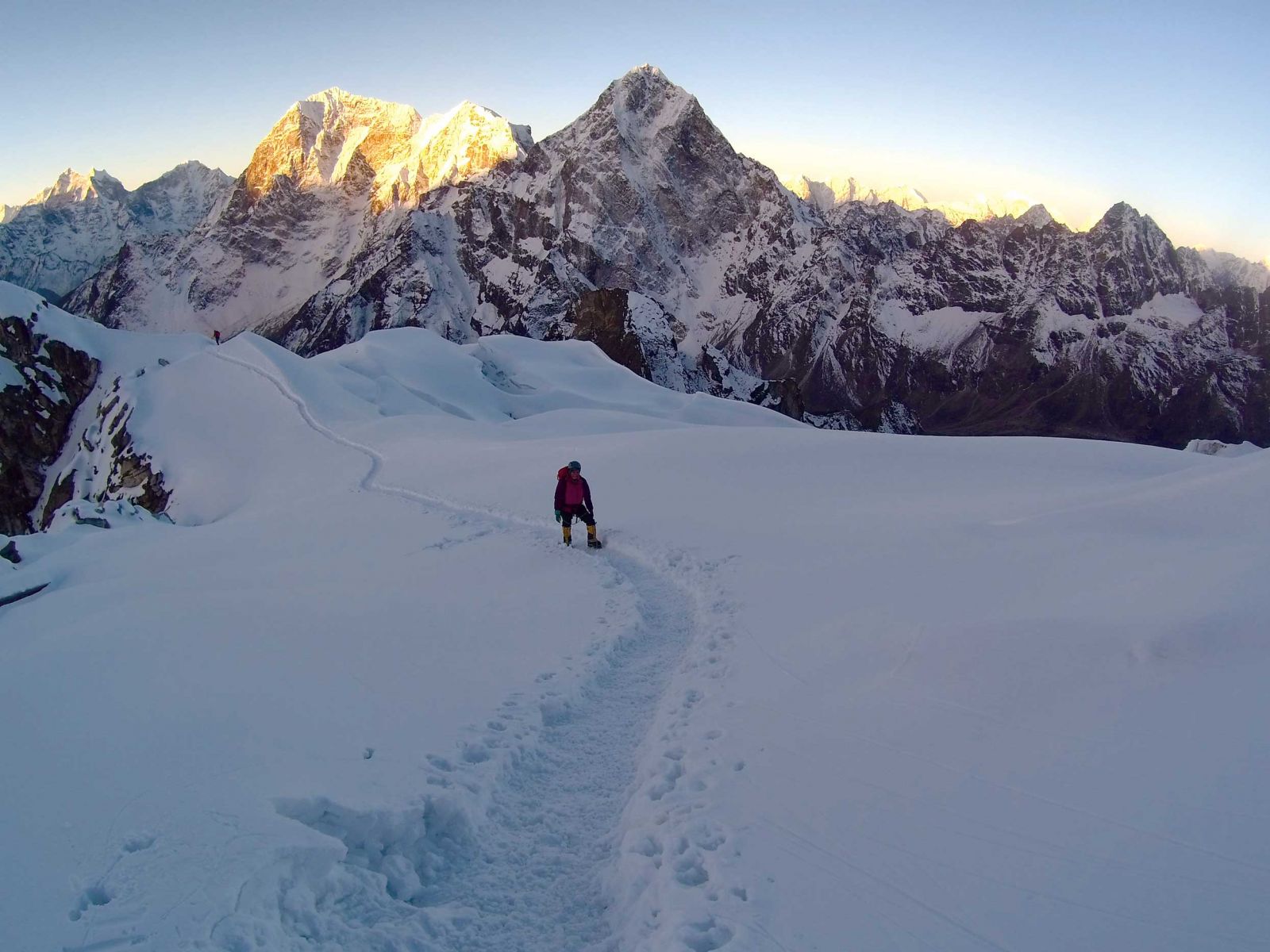 As she reached closer to the summit, "to climb or not to climb" was the dilemma inside of Purnima's head. Something within her told her that her dream was no longer just her dream. It was also the dream of the young children who gave her their lunch money to help her conquer the highest peak in the world. Hundreds of mountaineers have perished trying to conquer the mountain in Nepal. The locals call it Sagarmatha, sagar meaning sky, and matha meaning head. Among the Tibetans, the mountain is known as Chomolungma, meaning 'mother goddess of mountains', the British named it Everest, after Sir George Everest, and before that it was called Peak B. Most of the mountaineers that have reached the summit have years of training and a lifetime committed to mountain climbing, but there are some special individuals like Purnima who accomplish the extraordinary feat through their sheer passion in a comparatively shorter duration of training and preparation.
As she reached closer to the summit, "to climb or not to climb" was the dilemma inside of Purnima's head. Something within her told her that her dream was no longer just her dream. It was also the dream of the young children who gave her their lunch money to help her conquer the highest peak in the world. Hundreds of mountaineers have perished trying to conquer the mountain in Nepal. The locals call it Sagarmatha, sagar meaning sky, and matha meaning head. Among the Tibetans, the mountain is known as Chomolungma, meaning 'mother goddess of mountains', the British named it Everest, after Sir George Everest, and before that it was called Peak B. Most of the mountaineers that have reached the summit have years of training and a lifetime committed to mountain climbing, but there are some special individuals like Purnima who accomplish the extraordinary feat through their sheer passion in a comparatively shorter duration of training and preparation.
Purnima Shrestha was born in a small middle-class family in Arughat, a place from where begins the Manaslu Circuit trek. Although she grew up on the edge of the Himalayas, she neither dreamt of being a mountaineer, nor was she fascinated by mountains. Little did she know that one day she would embark on a journey to climb the mountain Manaslu itself, the eighth highest mountain in the world at 8,163 meters. After completing school in Arughat, she came to Kathmandu to pursue a college degree, and since she was always fascinated by stories, she pursued a degree in journalism and mass communication and majored in photo journalism.
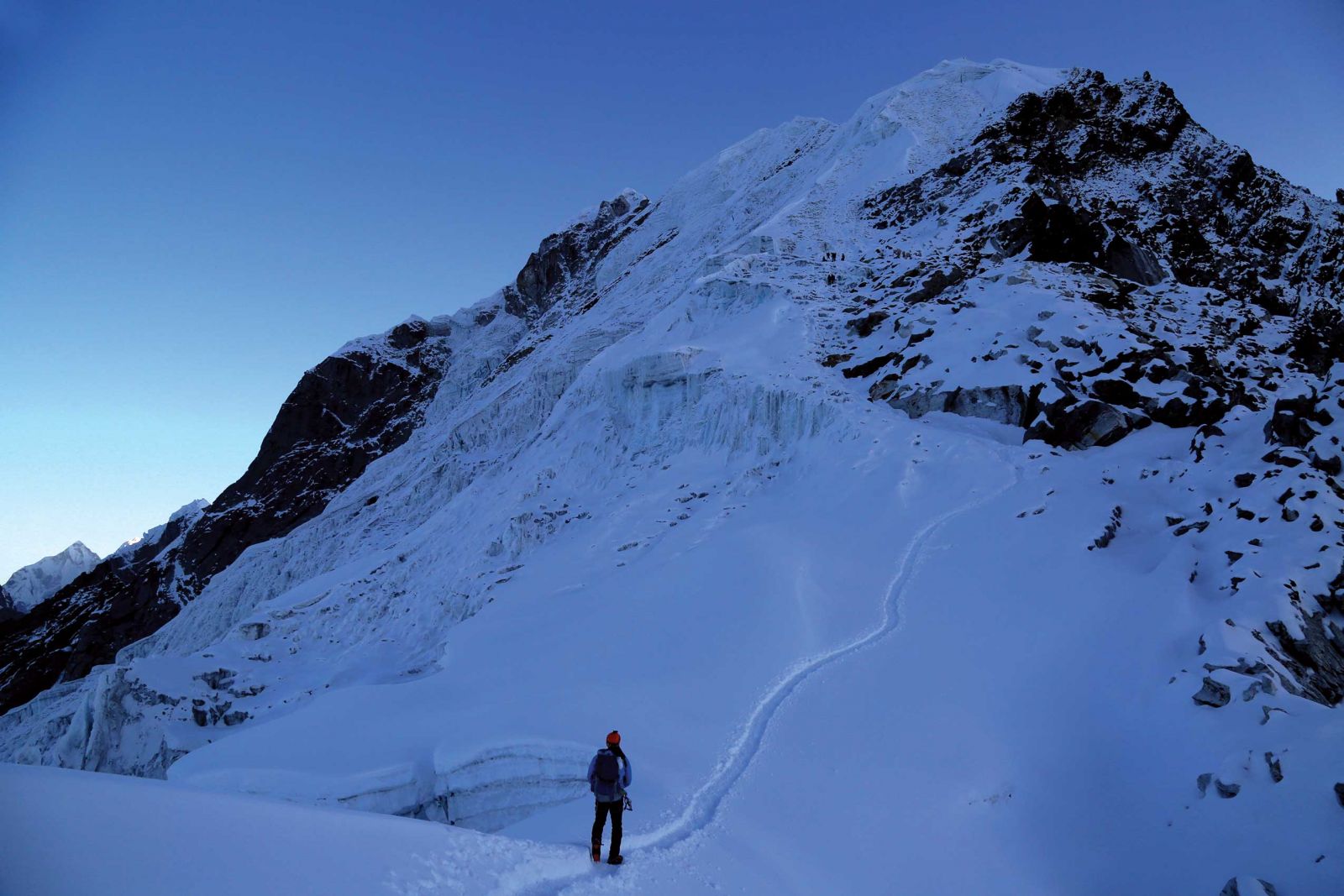 Initially, she began her career as a writer, but later, switched to photo journalism. Being a photographer played an important role in her decision to be a mountaineer. After she started working as photojournalist, she started taking travel photographs as part of her assignments and gradually got drawn to mountains. As part of one of her assignments, she went to Thailand for a foot-volley event. Nepal had participated in the competition for the first time. "During the event, some of the players came up to me and asked me about the number of mountains I had photographed or climbed." She was speechless. "I am girl born in a country full of mountains, yet I had neither seen them up-close nor photographed any.”
Initially, she began her career as a writer, but later, switched to photo journalism. Being a photographer played an important role in her decision to be a mountaineer. After she started working as photojournalist, she started taking travel photographs as part of her assignments and gradually got drawn to mountains. As part of one of her assignments, she went to Thailand for a foot-volley event. Nepal had participated in the competition for the first time. "During the event, some of the players came up to me and asked me about the number of mountains I had photographed or climbed." She was speechless. "I am girl born in a country full of mountains, yet I had neither seen them up-close nor photographed any.”
This was the event that, more than anything else, propelled her towards the mountains and gave her the drive to get into mountain photography.
The First Taste of Everest
In 2017, she decided to trek to the Everest Base Camp (EBC) as part of the Everest Marathon. She was delighted when she heard of the event, because it was the only way for her to get away from her daily work to finally see the mountains upclose. The Everest Marathon was the event that started a domino effect that led to her eventually becoming a mountaineer. The event organizers didn't quite believe she could go to such a high altitude do to photography. The plan was to take the marathon torch from Lumbini to Everest Base Camp. When she went to Lumbini, and she was told to trek only till the Namche Bazar, she was very disappointed, because people didn't think she could go further "I had never trekked before. They probably said it because they were concerned about me, but I was ready for it. I got my trekking boots, clothes, and gear, and I was ready to go by paying for my own expenses."
But, after getting health insurance, she was accepted on the team. The trek was a life-changing experience for Purnima. For her, the mountains were no longer the stuff of legends, the mountains became a feeling. "It felt like the mountain was pulling me towards it. I regretted not coming earlier. When I reached the base camp, I met people from expeditions, the porters and guides. I learnt a lot from them. When I told people that one day I will climb it, people laughed at me, because I had altitude sickness when I reached the base camp. My friends used to say that not everyone who reaches the base camp becomes a climber."
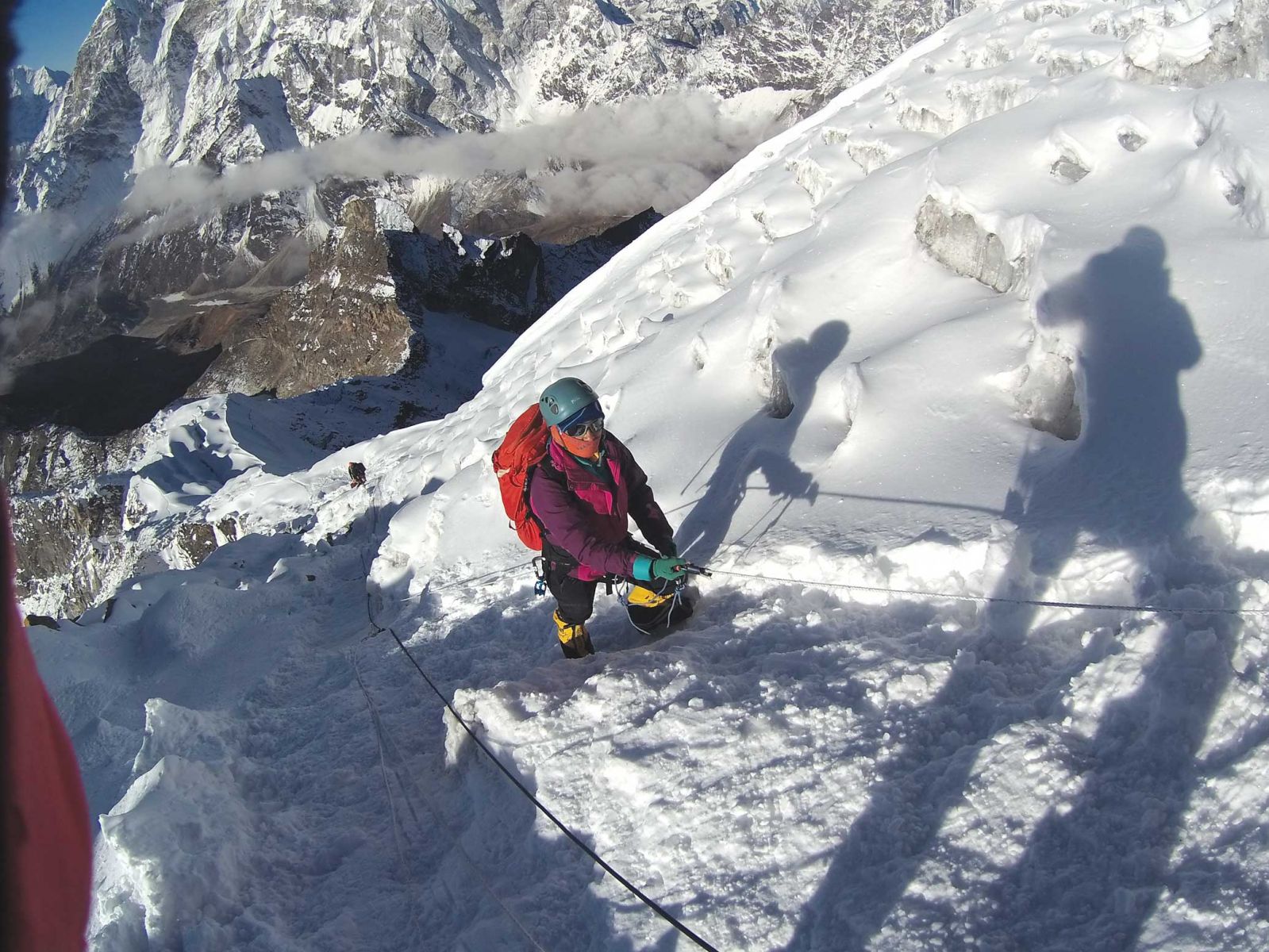 Manaslu, “The Mountain of the Spirit"
Manaslu, “The Mountain of the Spirit"
Purnima talked to many people about what she needed to do before aiming to surmount Everest, and they said she had to climb a mountain of 6000 meters, the measuring rod of preparedness. Her plan was to climb a peak in September, so she had three months to get ready. "You can call it luck, you can call it chance, or you can call it destiny, but I met a group of climbers who were preparing to do an expedition to Manaslu, which was a mountain in my own district." So, she decided to climb Manaslu, known as the "mountain of the spirit."
Purnima neither had experience nor did she have any training. She didn't have the finances, either. So, she decided to collect funds from her home district of Gorkha. "I approached everyone in my district, from businessmen to politicians. Everyone warned me about the risks, rather than supporting my dream." They advised her to take it slow and to climb something smaller, rather than aiming to climb the 8th highest peak in the world. However, she didn’t give up, and she even traveled to Manang to collect funds.
"I couldn’t collect the required funds, which was 12 lakh rupees. And, on a journalist’s salary, I didn’t have that much savings. All I had was determination to go for it. My friends used to say that I should give up on the thought. The sponsors were worried; they would be in trouble if something happened to me. I talked to my parents, as well, about my wish. My mother had her doubts at first, since I was her only daughter, and no one in her life had taken such an endeavor, but she agreed eventually. “Fearing her mother would refuse, she talked to her dad first, because she thought he would be more understanding, but to her surprise, after some persuasion they were both very encouraging.
Only a week was left before the climb, but despite all her efforts, Purnima still hadn't raised enough funds needed for the climb. “The voice inside my head was constantly asking what would happen to my family if something happened to me? But I had already made up my mind, and I gave them assurance that I would be fine up there." Seeing her determination, a friend came to her rescue and loaned some money. Purnima's only trekking experience was a trek to EBC, and the only training she had was running, wall climbing, and swimming. "I couldn’t do rigorous training, since I had to work as a journalist, too. I used to come back from work and go running to Swoyambunath Temple."
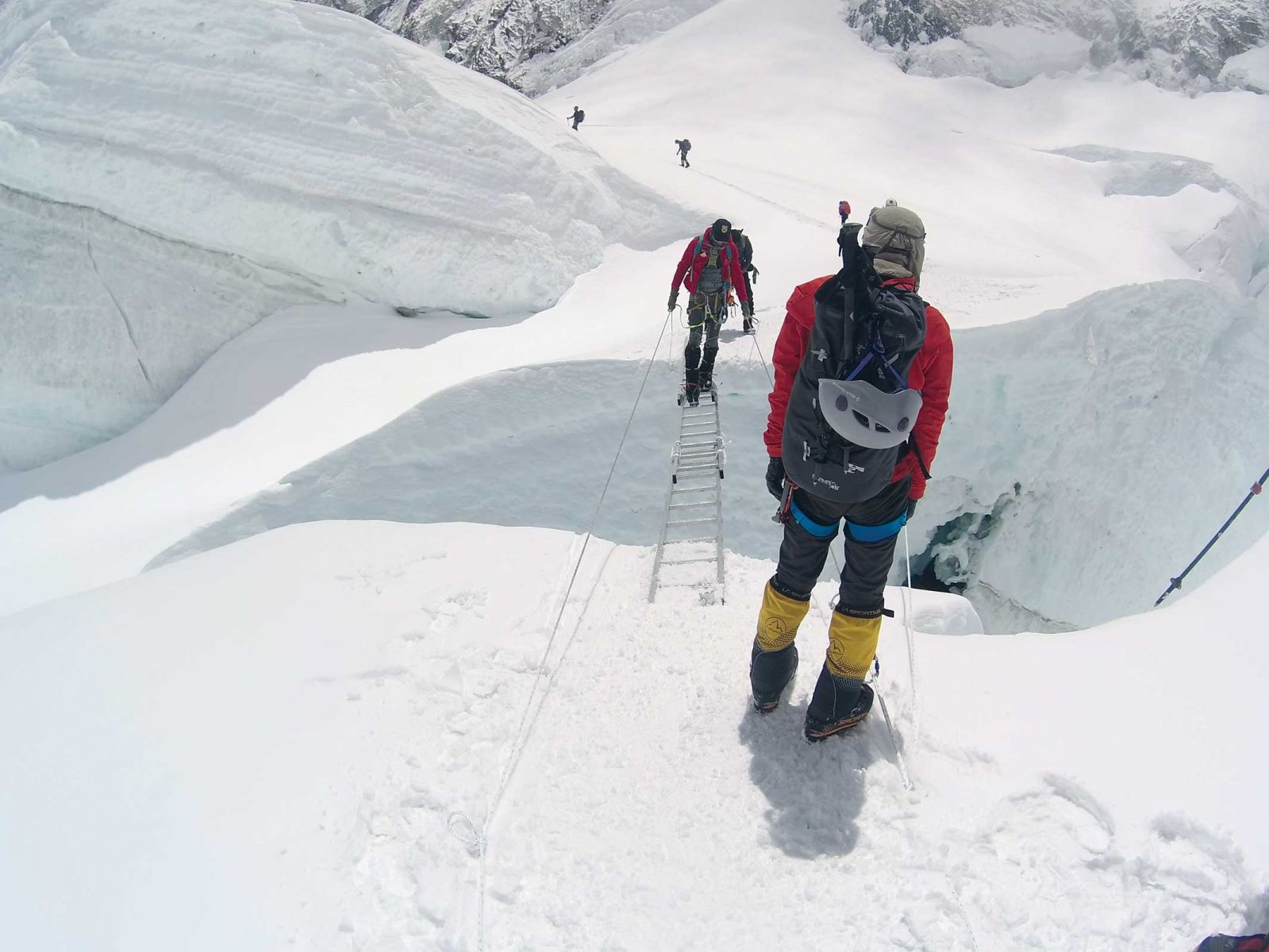 She joined an all-women team of mountaineers from China, Australia, and Europe. "There is this female photo journalist who has no climbing experience and wants to climb Mansalu," Purnima heard whispers in the camp. "Professional mountaineers looked at me and couldn't believe I was a mountaineer, because physically I didn't look like one.” They hadn't seen the mountaineer inside of her. It wasn't easy and she had altitude sickness; even the Sherpa with her was worried. Half way through the climb, she had no energy, but felt like her feet and hands moved on their own. She used to literally count her steps and decide when to rest.
She joined an all-women team of mountaineers from China, Australia, and Europe. "There is this female photo journalist who has no climbing experience and wants to climb Mansalu," Purnima heard whispers in the camp. "Professional mountaineers looked at me and couldn't believe I was a mountaineer, because physically I didn't look like one.” They hadn't seen the mountaineer inside of her. It wasn't easy and she had altitude sickness; even the Sherpa with her was worried. Half way through the climb, she had no energy, but felt like her feet and hands moved on their own. She used to literally count her steps and decide when to rest.
"You pray for your survival. Self-motivation is the key. I had nightmares that I would lose my hands or feet and return disabled." On many occasions she questioned herself. She wondered if she had made a mistake and wished she could see her family, but she kept on pushing herself, and 22 days after she left for the expedition, she finally reached the summit.
"If a person has a dream and dedication, impossible is nothing. It is not just about physical strength, the mental side of it is the key. I joined a gym later, but I was a raw climber then, so I feel my mental strength played a more important role in reaching the summit."
On her return, when she reached the base camp, she told everyone not to wake her up till noon, but she was so excited, she was up at five. Purnima believes that climbing Manaslu was a bigger success story than Everest. It was a September to remember for her. “I returned home during Dashain, and it felt like returning after victory, like in the fables."
The Quest for Everest
After conquering Manaslu, the appetite for summiting the world’s highest mountain was growing within her, and Purnima had her eyes on the next challenge: Everest. Even though people advised her to prepare for it the year after the recent climb, she soon started training hard for the highest peak in the world. Her trainer knew what training was required for a mountaineer. He worked on strengthening her arm and leg muscles.
"There is no shortcut to acclimatizing to the altitude, and you need to train hard before making the climb. My trainer had done his research for me. I had realized the importance of building stamina. I used to carry 20 kg weight on my back and walk on the treadmill.”
Mountaineers put themselves and their families under a lot of stress, and Purnima's story was no different."When I shared my Manaslu experience, my loved ones got more scared. The news of the deaths in Everest was what everyone had heard. Money was another issue, since 25 lakhs was required."
She had to juggle her time between family, work, and daily life. She spent many days in search of sponsors. She even went to schools, and the children used to give her their lunch money. "I found support in Karuna Foundation, who wanted me to raise awareness about cervical cancer among women through my climb."
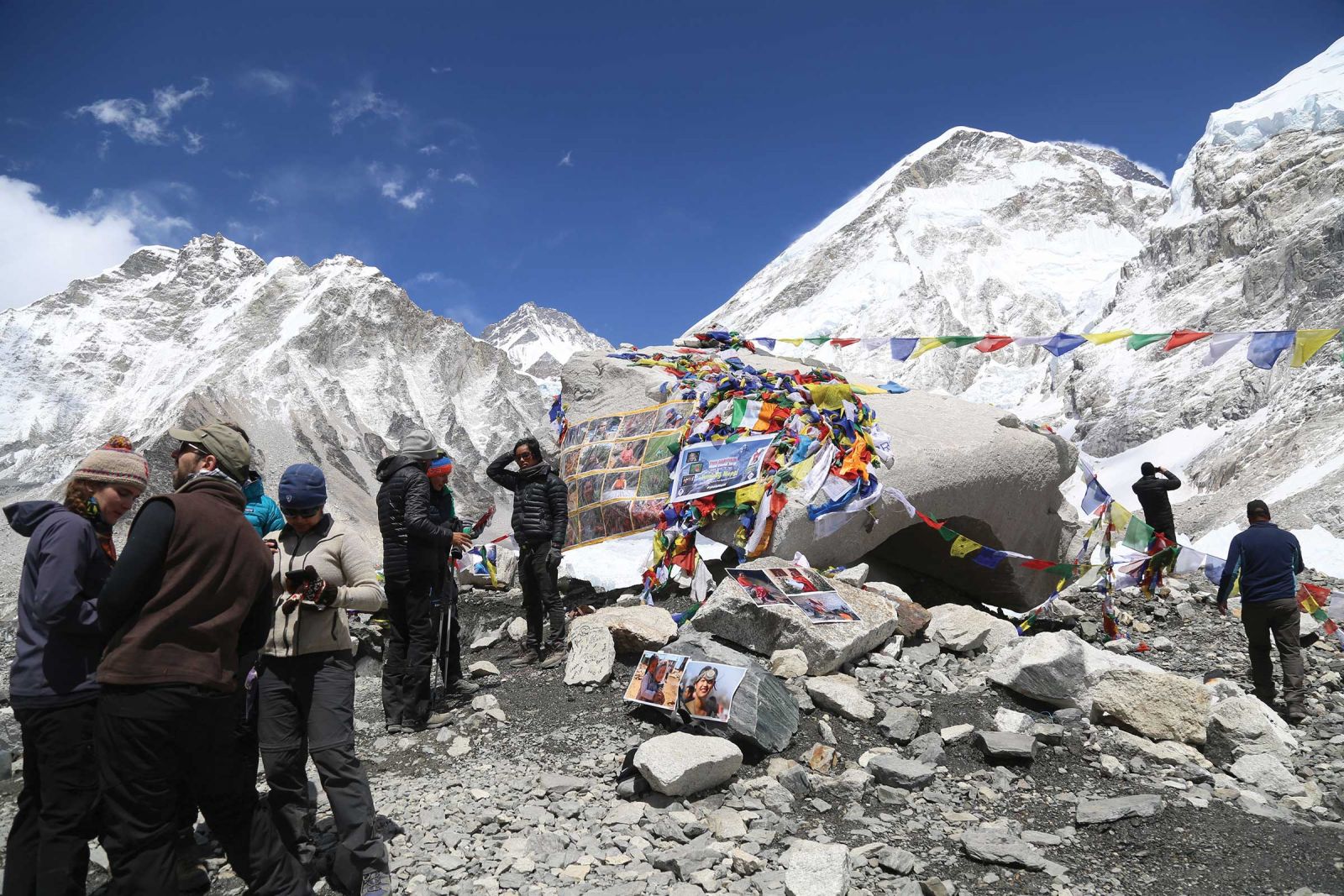 "I felt like I had to conquer two Everests. The challenge of raising fund was no less than climbing Everest. I had to get insurance, hire Sherpas, and manage food and lodging. Additionally, I also had to buy the required equipment, oxygen, and tents.”
"I felt like I had to conquer two Everests. The challenge of raising fund was no less than climbing Everest. I had to get insurance, hire Sherpas, and manage food and lodging. Additionally, I also had to buy the required equipment, oxygen, and tents.”
Purnima didn't belong to a well-off family, so she knew how much five rupees meant to the children studying in the government school. "The lunch money that young children gave to me inspired me more than any other thing in the world. The children who grew up reading the life stories of Tenzing Norgay, the first ever man to summit Everest, along with Edmund Hillary, and PasangLhamu Sherpa (the first Nepali woman to summit Everest) were actually supporting a mountaineer to climb a mountain. It was impossible without their support. I also knew that if I was able to climb Everest, it would inspire them, too."
Everyone at her workplace supported her, from the watchmen to the cook 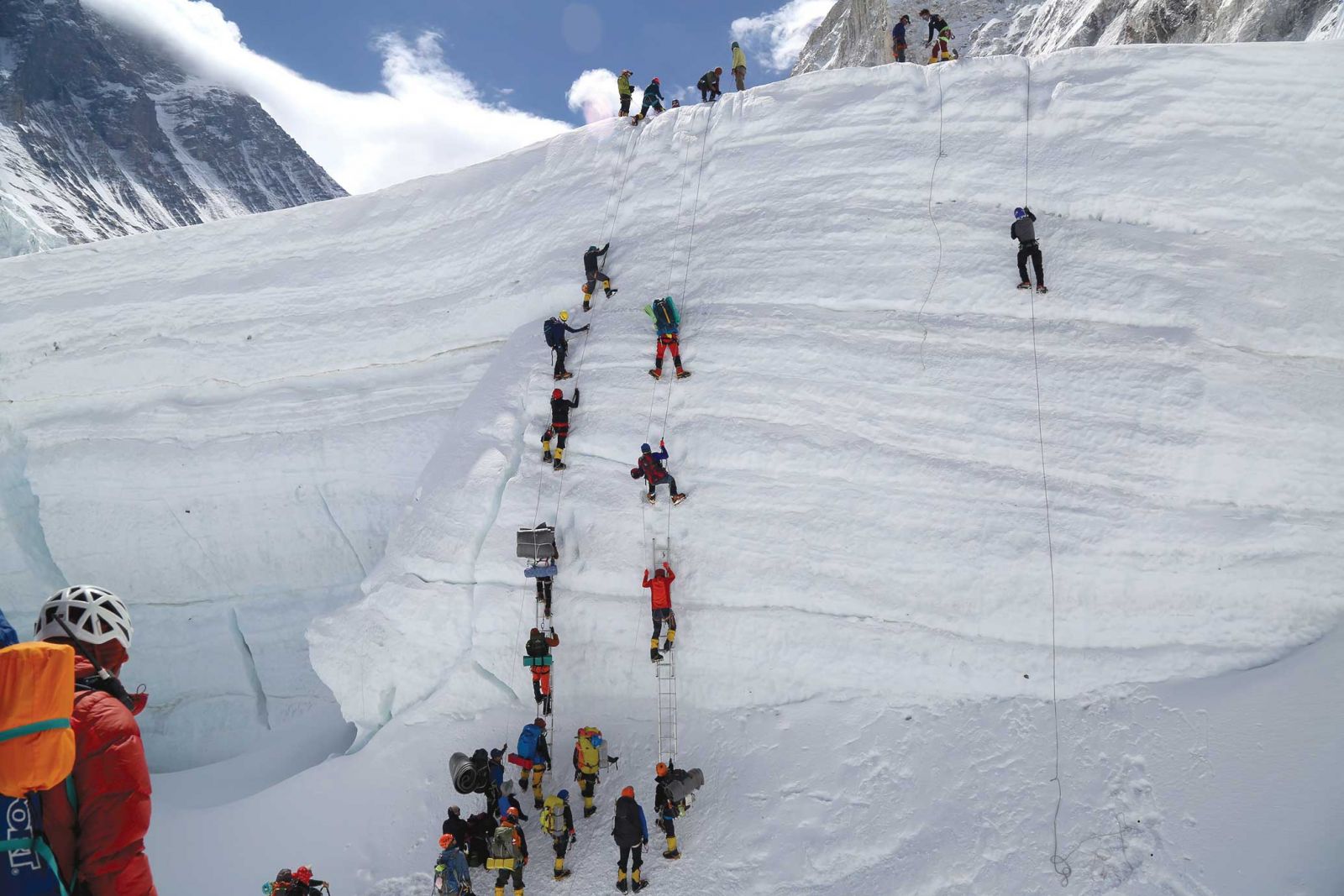 to the editors, who gave her their two days' salary. "I feel fortunate that I had everyone's trust. They believed that I could do it. I could feel positive vibes from everyone, and I finally collected the required funds.”
to the editors, who gave her their two days' salary. "I feel fortunate that I had everyone's trust. They believed that I could do it. I could feel positive vibes from everyone, and I finally collected the required funds.”
The Photo Exhibition above the Clouds
One of the most interesting things about her expedition was that she held a photoexhibition in the mountains, too. Her intention was not only to summit the peak with the campaign of awareness about cervical cancer, but also to have a photo exhibition titled, "Smiling Women of Nepal."
"From the base camp to the top, I exhibited photographs of women from the Terai, the hills, and theHimalayas; the photos I had taken throughout my career."
She carried the photos and exhibited them as she moved along the different camps. "I could only carry one photo to the top, the photograph of my mother.” She tied the photos to the tents, using rope and duct tape. "Mountaineers from all over the world could see my photographs. The main aim of the exhibition was to remove misconceptions that Nepalis are poor and sad. It was to show people that, no matter what we go through, we always smile." Although she couldn't count how many people witnessed the exhibition, she got positive feedback from many.
"Just taking pride in being a mountainous country isn't enough. Everyone should at least visit the base camp. My friends who live abroad often tell me that they feel embarrassed when someone asks if they have seen Everest and their answer is no."
Not many mountaineers take their parents with them, but Purnima took her father with her. She wanted to make him realize why his daughter wanted to climb the mountain. Although he couldn't reach the base camp, he reached Namche Bazaar, which is located in the Khumbu area, at 3,440 meters.
"My team had nine Chinese and one Nepali climber, along with Sherpas. One of the Chinese mountaineers had no legs; he also came to summit the mountain. He was there to fulfill his 40-year-old dream after his unsuccessful attempt in the 1970s when two of his legs had to be amputated. There was a team of journalists that followed him to cover his expedition. I wish Nepali journalists had similar desire to cover it upclose. To understand the mountain, we need to get close."
The Ascent
A mixture of extreme weather conditions and human physiology causes deadly consequences for Everest mountaineers, and Purnima was no different. Starting from Base Camp, Purnima and her fellow climbers passed through the Khumbu Icefall with the aid of ropes and ladders. "I started climbing from Camp 1 at three in the morning; it was cold, and the wind was making the climb difficult. It was a continuous climb with traffic jams. Traffic jams are can be very annoying when we're late for work. But, at over thousands of meters above sea level, they can be deadly, as well.”
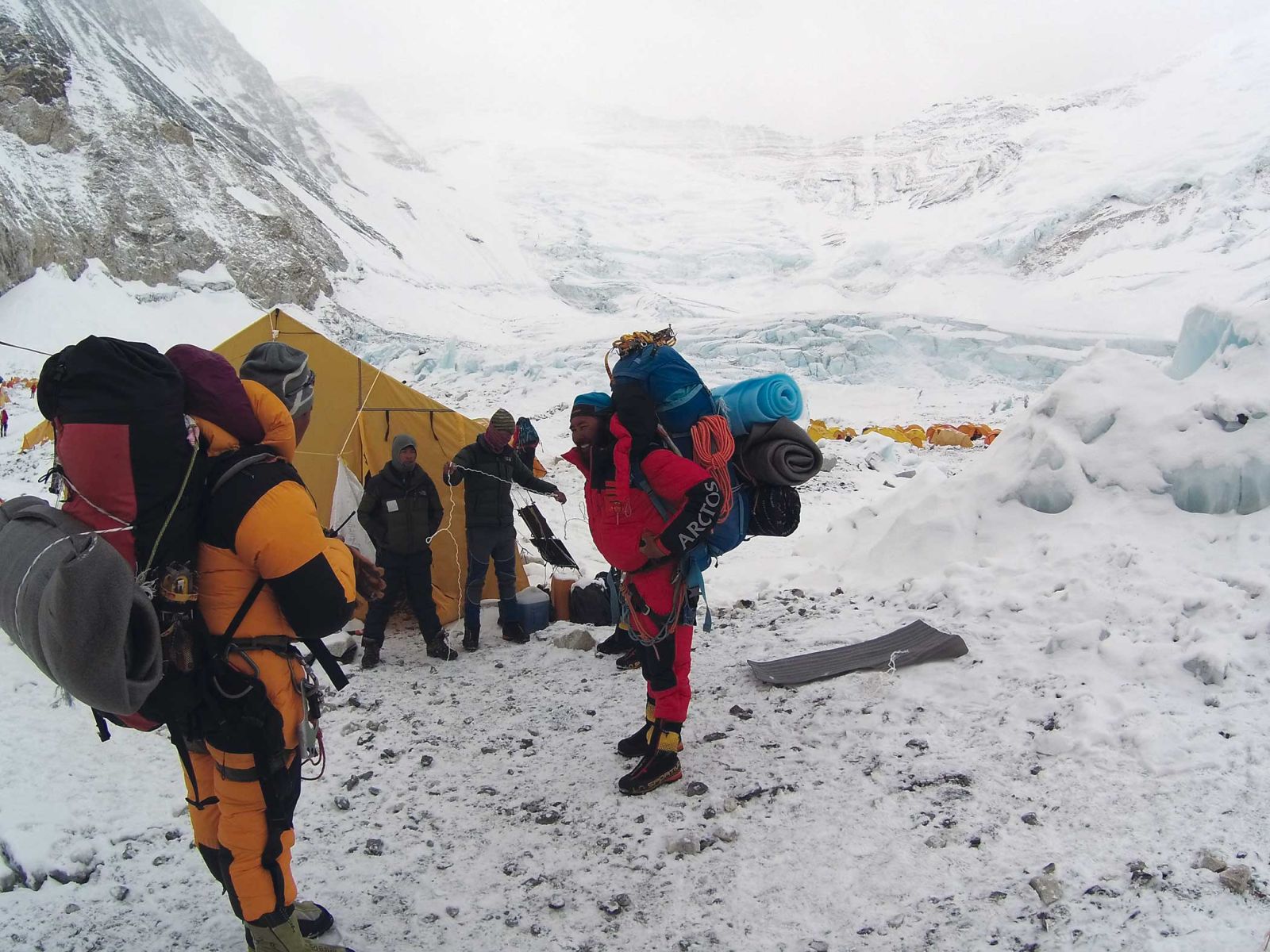 "I was exhausted physically and mentally. I wished I could just survive. I wanted see my mom again. I felt like the patient in the ICU waiting for her fate. Lack of oxygen was one of the major challenges posed by the mountain. Since the oxygen levels at the top are only a third of what they are at sea level, it makes breathing very difficult. I used oxygen from Camp 3 onwards. By that time, I was hanging on to the rope like I was hanging on to dear life.”
"I was exhausted physically and mentally. I wished I could just survive. I wanted see my mom again. I felt like the patient in the ICU waiting for her fate. Lack of oxygen was one of the major challenges posed by the mountain. Since the oxygen levels at the top are only a third of what they are at sea level, it makes breathing very difficult. I used oxygen from Camp 3 onwards. By that time, I was hanging on to the rope like I was hanging on to dear life.”
"The most risky and challenging moment was from Camp 4 to the summit, called the death zone, because at this altitude, the human body is unable to acclimate to the low level of oxygen and begins to weaken. It was then I realized how important breath is to a human being."
"It was so dark, I couldn't see the summit. I hadn't slept properly for five days. I was thirsty, but didn't even have the strength to take out the bottle from my bag. I wished that I could take a nap for just a minute."The Sherpa who accompanied Purnima helped to motivate her a lot. "You are stronger than the rest. Keep going," she recalls him saying. "I wanted to give up, I wanted to return back.”
Lack of oxygen and cold had clouded her judgment. "To climb or not to climb" was the dilemma inside of her head. Despite the fear and anxiety, something within her told her that her dream was no longer just her dream. It was also the dream of the young children who gave her their lunch money to help her climb. She could visualize the children dancing with joy after hearing that she had climbed the summit. She remembered the old people who had put tika on her head and gave her their blessings. She could see the faces of her family and her friends.
"If I had climbed with my own money, I wouldn't have had the motivation to push myself. I was conflicted from inside, and I knew I had to fight till my last breath.” The climb to the top began at 8:00 p.m. The weather report had suggested that the wind would slow down after 10, but it only got stronger. She felt like it would blow her off her feet. She was running out of food, water, and oxygen. Out of the four cylinders, she had just two remaining. On top of that, she had period cramps, too. She could hardly see anything due to blurred vision. Initially, she thought her glasses were covered with snow, but later realized that she had snow blindness, a painful and temporary loss of vision due to overexposure to the sun's UV rays. She could also hardly move her hands.
"After I reached the summit, I felt relief more than anything else. I felt like I was barely conscious. It was more relief than excitement, but there was still anxiety about the climb down. I felt like my mind wasn't working. I couldn't see anything while coming down.” After she reached the base camp, the excitement slowly started to kick in.
"Everyone from the President to the leading politicians had congratulated me on social media. I was announced as the first photojournalist from Nepal to summit Everest. I talked to my mom after the climb." Her mother asked her how she could do it? Her daughter, who didn't dare to climb a hill to collect grass, had climbed the highest peak in the world.
.jpg) "I asked her why she didn't stop me. She said my aspiration was bigger than their fears. My father, who had been with me till Namche, was worried because he had altitude sickness even at 3000 meters. I talked to my brother in Qatar, too, who was delighted to hear the news."
"I asked her why she didn't stop me. She said my aspiration was bigger than their fears. My father, who had been with me till Namche, was worried because he had altitude sickness even at 3000 meters. I talked to my brother in Qatar, too, who was delighted to hear the news."
At Surke, she saw green after a long time. To see the flowers blossoming there was an amazing experience for her after seeing nothing but snow for days. "Most of the news I heard in the camps during the expedition was bad. I used to hear how mountaineers had to be rescued, how Sherpas lost their hands. I used to often check my feet and hands. I doubted if I could return in one piece."
Whenever she sees a mountain, she feels like going back. "When you have willpower, you can do anything. It’s not necessary to be a professional mountaineer to overcome challenges in life. But, when you are close to the mountain, it changes you, it changes your personality. It teaches you patience. I have become a better journalist. The way I report news has also changed."
Purnima's ultimate dream is to support aspiring mountaineers the way people supported her. AmaDablam is the next peak on her radar, one of the most aesthetic climbing routes in the Himalayas. She wants to make the climb very soon. With her persistence, there’s no doubt she’ll get there.




